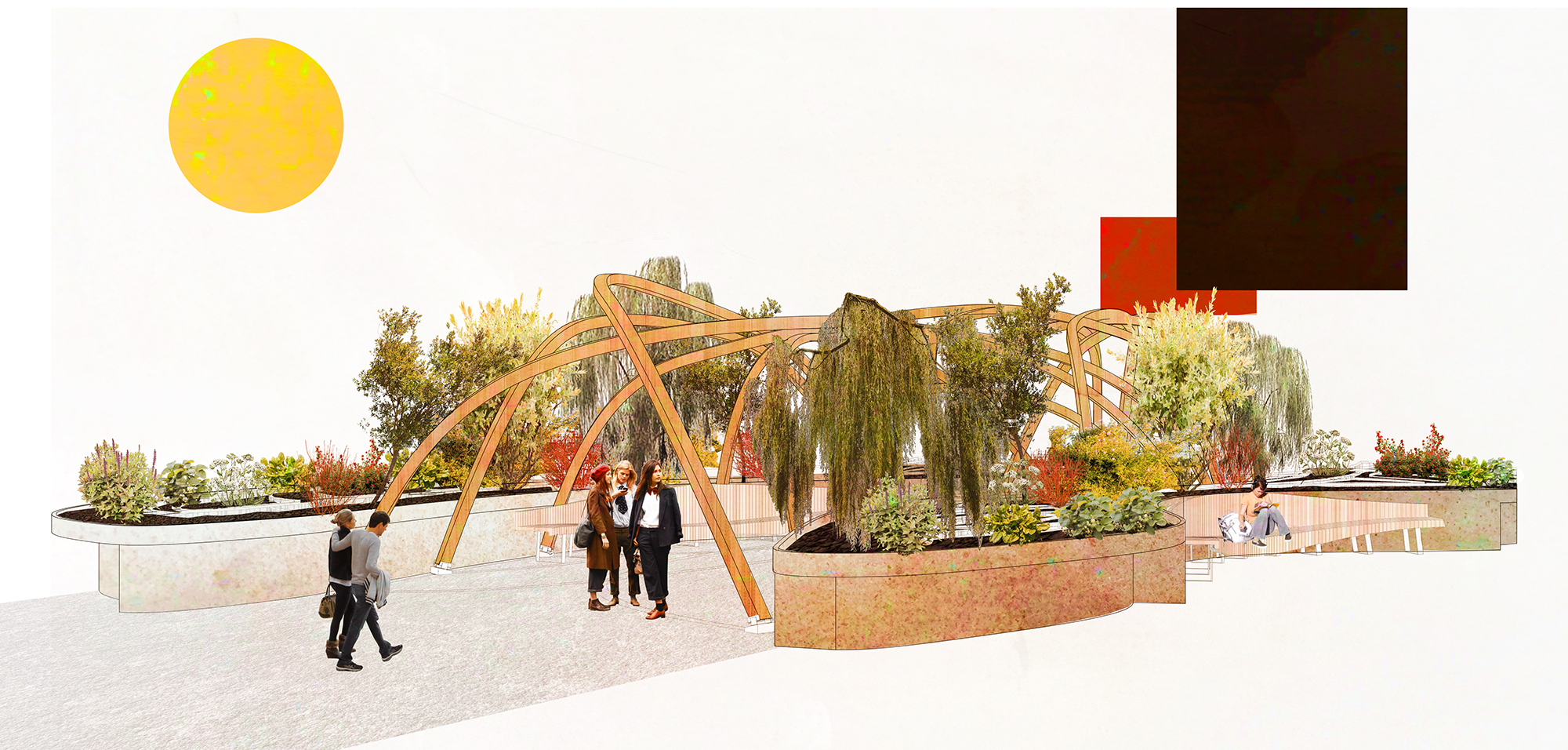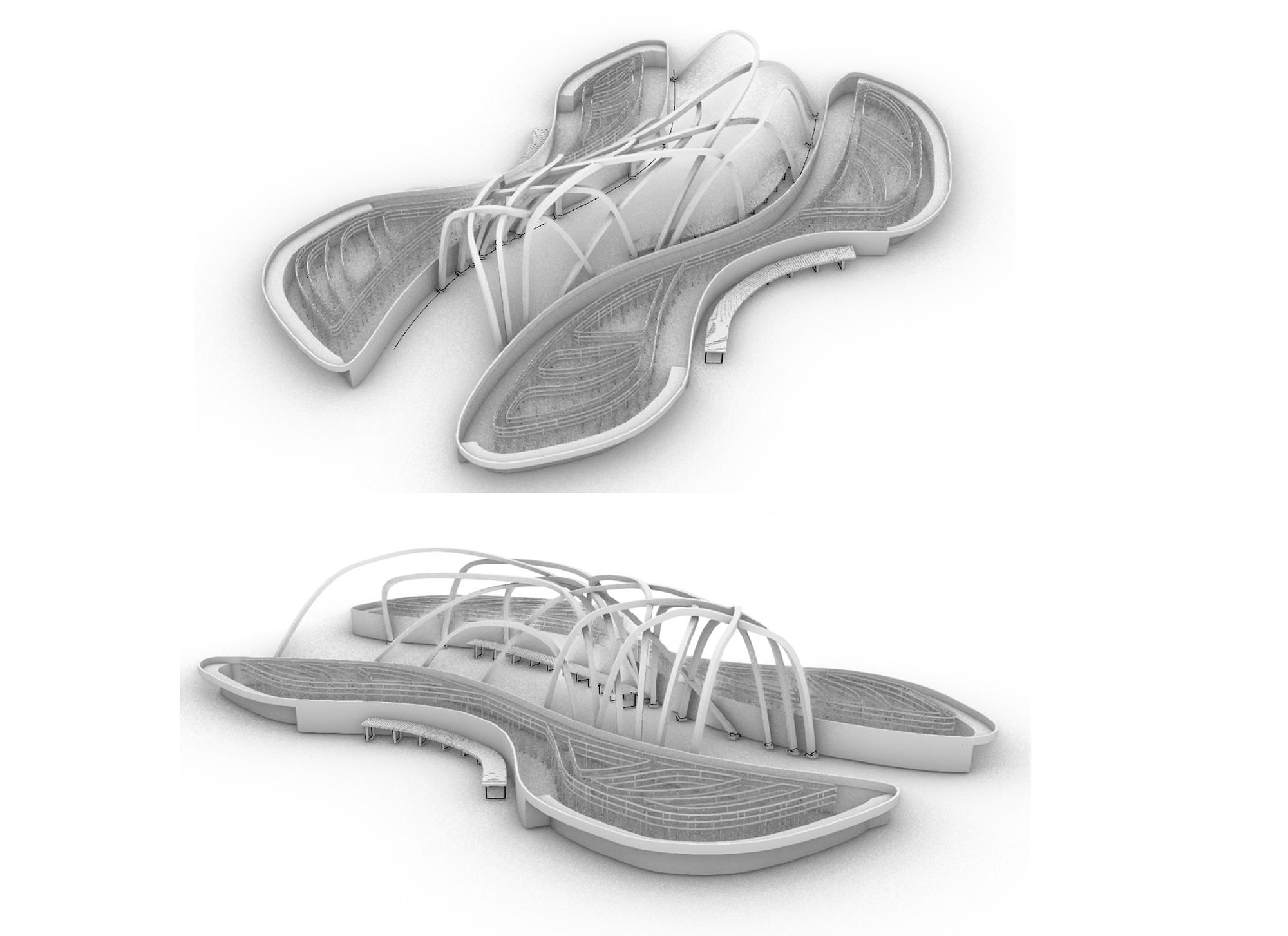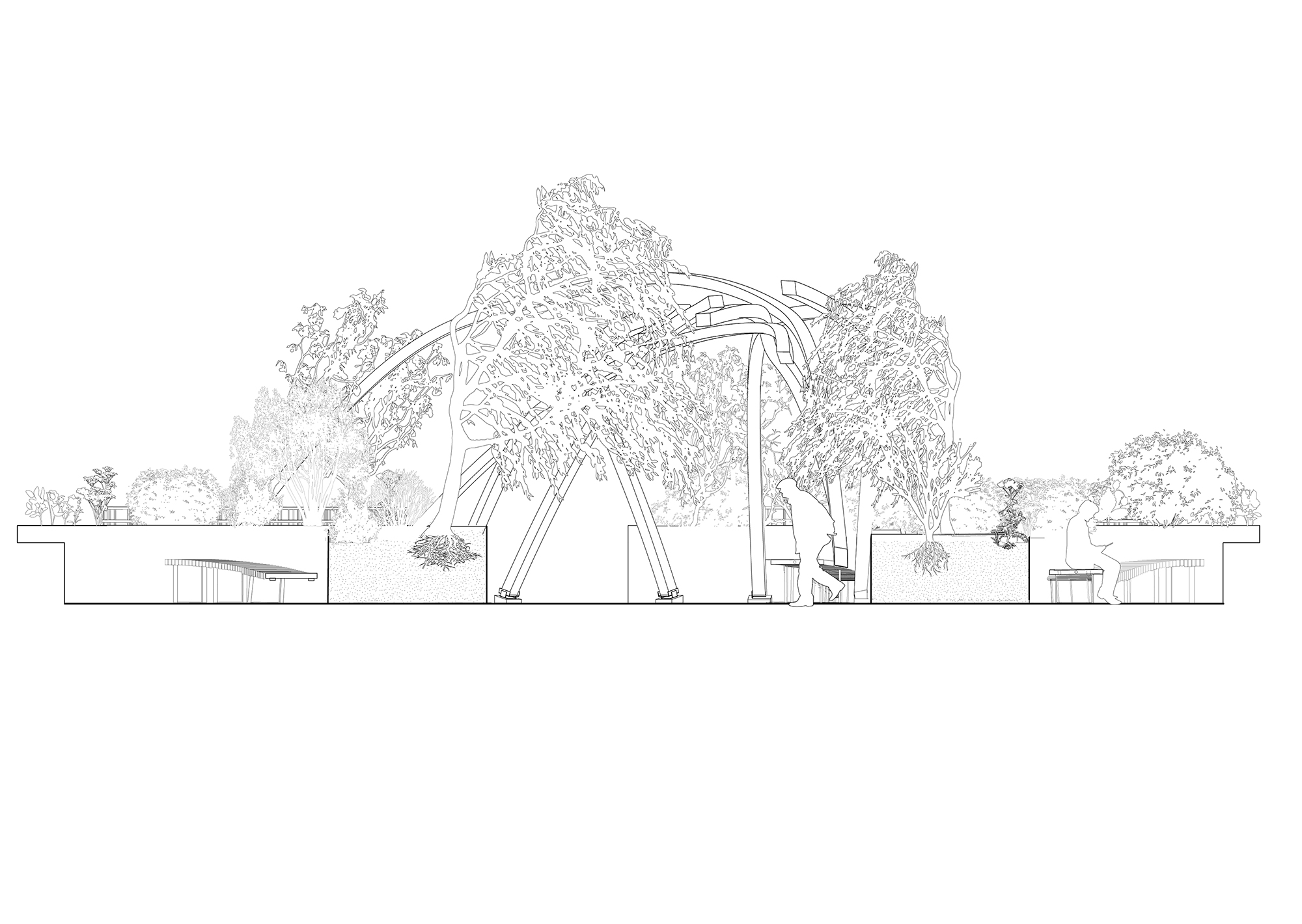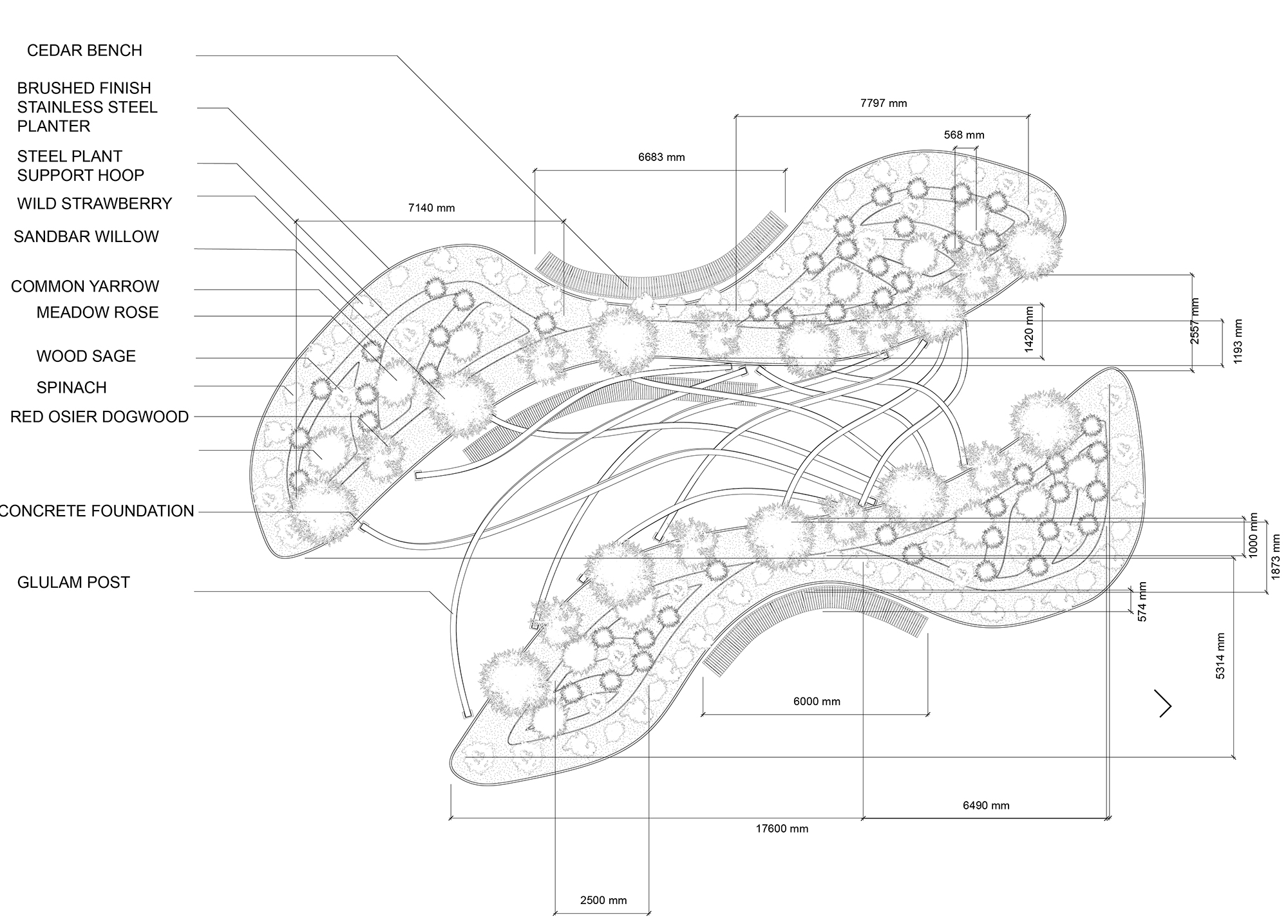
Natalie Sisson, "Seven Fires Prophecy Trellis and Planting Beds"
In Our Plant Relations (LAN3016), an option studio taught by Sheila Boudreau, students were asked to study Indigenous and traditional knowledge and consider ways of applying it to a specific site: the courtyard at Ryerson University's Ted Rogers School of Management, where the school is planning to create a new Indigenous healing garden. Students attended online lectures with Indigenous knowledge keepers before embarking on the design process.
Natalie's project is a trellis structure that would be positioned near the courtyard's entrance. "It was intended to be experienced as one of the main access points," she says. "It's a transitional zone. There's seating for people to spend some time on and experience some of the medicinal aspects of the site. The intention is that the trellis would lead into a future gathering space."

The design references the "seven fires prophecy," an Anishinaabe prophecy that portends a future time when humanity will need to choose between an eternity of harmony with nature or eternal destruction. "I took the prophecy as a jumping-off point for thinking about the courtyard as a space for symbolically referencing this idea of a pathway towards healing," Natalie says.
The structure is designed to provide an equally welcoming environment to both humans and plants. For humans, there would be benches lining the perimeter. They would be made of cedar, a material of significance to Indigenous peoples.

The trellis would be made of glulam, an engineered wood product that is relatively easy to bend and shape. The organic shape of the wooden webwork is intended to bring to mind the idea of weaving. "It's meant to reference this idea of weaving forms of life together to heal not only people, but also the landscape," Natalie says. "And it's also a reference to this idea of reconciliation with Indigenous people and the land."
Underneath the wooden structure would be a series of steel planters. Natalie took care to select plantings that resonate, in various ways, with Indigenous cultures. Sandbar willows, known for their medicinal properties and for the usefulness of their twigs in basketmaking, are a centrepiece. Over time, their branches would intertwine with the glulam lattice, turning it into a leafy canopy.

The understory would be made up of plants like wild strawberry and spinach, selected both for their relationship with traditional food systems and because the two plants thrive on each others' presence. An internal system of steel bars would both provide support for weaker plants and help separate the different types of flora, creating an attractive interweaving of colours.
The structure is designed with public programming in mind. Edible plants could be donated to a food bank, or used as ingredients in a public kitchen. Other plants, like wood sage and red osier dogwood, could be used in Indigenous ceremonies.

